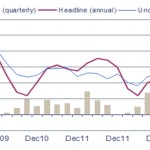KPI of the Day: $ Gross National Product (GNP) per capita

Definition
Measures the dollar value of the outputs (goods and services) produced by the citizens of a country, no matter their location, divided by the number of citizens.
Purpose
To provide a broad overview of the economic activity and to offer policy decision makers necessary data on which to base their decisions. It reflects the average income of a country’s citizens.
Recommendations
Gross National Product (GNP) and Gross Domestic Product (GDP) are oftentimes used as synonymous. However, there are several differences between the two indicators. While the GNP measures the production output generated by a country’s citizens and enterprises, whether physically located domestically or abroad, the GDP measures the total output produced within a country’s boarders, no matter of whom produces them, local or foreign entity.
GNP per capita shows what part of a country’s GNP each person would have if this GNP were divided equally. Knowing a country’s GNP per capita is a good first step toward understanding the country’s economic strengths and needs, as well as the general standard of living enjoyed by the average citizen.
A country’s GNP per capita tends to be closely linked with other indicators that measure the social, economic and environmental well-being of the country and its people. For example, generally people living in countries with higher GNP per capita tend to have longer life expectancies, higher literacy rates, better access to safe water and lower infant mortality rates.
Alongside the $ Gross Domestic Product, the $ Gross National Product represents one of the most comprising indicators of the estimated economic production belonging to a national economy. It is also indicative of a country’s economic growth, wealth and wellbeing.
This, however, only partially, since current levels of production do not directly reflect on the level of accumulated wealth at the citizens’ disposal. While $ GDP is the output produced with native labor and capital, $ GNP includes the aggregated market value of all the goods and services produced in one year by residents.
In order to avoid double counting, it is important to highlight the fact that the value of the outputs taken into consideration for the $ GNP per capita is the final value as received from the end consumers. For instance, the financial gain obtained by selling raw materials to a manufacturing facility is not included into the calculation, whereby the value of the final product developed from said materials is.
The main reasons for calculating $ Gross National Product (GNP) per capita is, therefore, to enforce the governmental policy development process and to assist decision makers in the business sector in estimating demand and planning investments.
For an adequate employment of this KPI, best practices include the following:
- Monitoring $ GNP together with other indicators like # Healthy life expectancy, # Unemployment rate or # Happiness Index in order to obtain an overall picture of the citizens’ well-being and welfare degree;
- Acknowledging the fact that a considerably large variety of goods and services are omitted from national accounts, such as household or black market outputs;
- Considering the effects of inflation when comparing historical data of this indicator from one year to another.
Image source:

Tags: Government - State / Federal performance, Government performance, KPI





